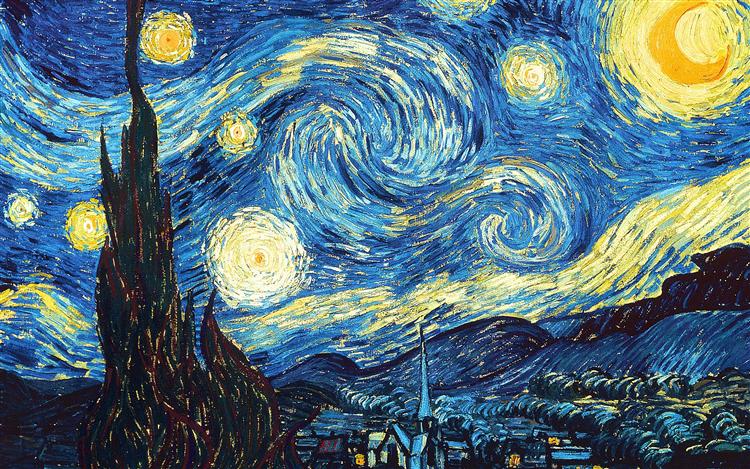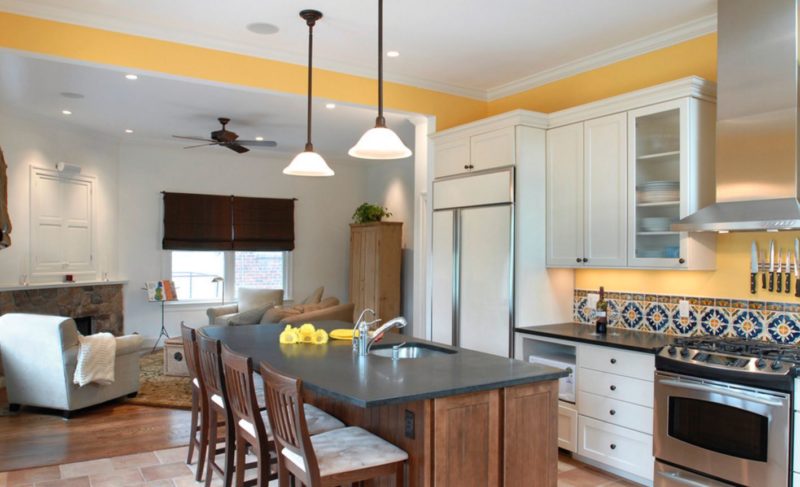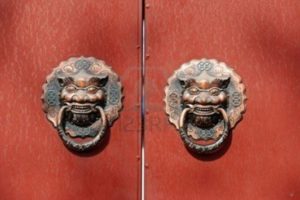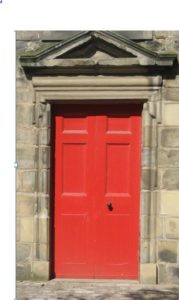Decorating with Yellow –
This spring while you are at home thinking about what paint colors to pick for your kitchen or bathroom, consider this article (along with the others in the series, Blue, Red) about the power of color.
Arguably, one of the most important colors in the color spectrum is Yellow (which is why we chose it to start this blog series.) Nature reinforces its importance, notice that it’s a primary color along with red and blue (RYB) and the colors we use in our printers (Cyan, Magenta, Yellow and Key-Black.

Take a look at the iconic “Starry Night” painted by Vincent Van Gogh. Some believe that his use of Citron Yellow, was meant to represent a higher power. Similar to the sun being the biggest and most important star in the Milky Way. Others believe that Van Gogh used the color to offer comfort or provide solace with his dreary and unfortunate living situation. Its this second interpretation that helps us dispel the rumors that yellow can be too bright or too loud to decorate with. The color can be used to provide a sense of calm and serenity.
Yellow is the color that resonates with the left side of the brain, helping to activate muscles, stimulate mental activity and encourages communication. It’s easy to see and produce naturally – no wonder we see the color so often throughout art history.
Decorating with bright and bold colors, especially one like yellow, is an easy way to draw attention to any part of the house. Decorating with yellow is not as difficult as you might think. When people think of yellow, a bright school bus or a yellow stop light might come first to mind. Truth be told, that yellow is far more versatile.

At Grossmueller’s Design we have used yellow to decorate just about every room in the house. From kitchen tile back-splash to accent walls in children’s bedrooms. Yellow is flexible and forgiving. For example, look at the tiled back-splash in the picture to the left. See the way it picks up the hue of the lower cabinets and serves as a transition between saturated lower cabinets and appliances. What about the use of yellow in this children’s bedroom below? Combined with the window sill, outlined in the same color, they create a dramatic focal point – allowing the accent wall to shine being both vibrant yet restful.
Still think Yellow is too bright or that it cries for too much attention? Yellow combined with concentrated hues of red or blue make it extremely versatile, bringing warmth and excitement to any room with colors like Babouche, Showtime, Saffron, Oucher, and Medallion. a to name a few.
Using yellow combined with a brown undertone produce a goldfish neutral, creating a sense of calm – like Honey, Granola, and Butterscotch Whether using yellow to decorate a major room or using simple accessories or minimal décor to tap into the design bring out any wall or floor enabling the space to stay cozy.
Click through the slideshow to see how Grossmuellers Design Consultants can use yellow with your design.
[pjc_slideshow slide_type=”yellow”]
This spring while you are at home thinking about what paint colors to pick for your kitchen or bathroom remodel, consider this article (along with the others in the series – Yellow, Blue)
Traditionally Valentine’s Day brings to mind red hearts, red roses, passion, chocolates and cute, chubby cherubs that strike us with an abundance of love! But we at Grossmueller’s Design think COLOR! Picking a color for your front door can be an easy face lift, yet be the toughest decision to make because it is the first impression to visitors . You want it to coordinate, be welcoming and make a statement! Remember, there is more to a color than face value…your front door actually expresses a lot of meaning.

We thought it would be fun to let you in on the meanings and history of the color red! What comes to mind when you think about the color red? Is it passion? Is it power? How about love? The color red is strongly linked to two different emotions. The first emotion is love associated with passion, sensitivity, and desire. Red is emotionally charged and intense.
The second is fire fueled by courage, energy, power, strength, danger, blood, sweat and tears. When it relates to your front door, red has taken on many other interesting meanings over the course of history.
In Chinese culture, red is considered to be the lucky or sacred color. Also, relating to Feng Shui, a red door symbolizes the mouth of the home. By painting your front door red, Chi which means positive energy, is drawn to your home. According to Chi, the front door is the spot where energy enters your house and with the color red, it will bring you abundance, opportunities and happiness.
Back in colonial America, the red door was a symbol of a safe haven and informed settlers that they were welcome there. Also, in the 19th century, red doors were used as part of the Underground Railroad, symbolizing a “safe house” for the slaves to escape to the Free states. In the modern era, red is used frequently for its high visibility – stop signs, ambulances and fire equipment.
The color red also took on many religious meanings as well. In Catholicism, a red door symbolized the blood of Christ, which meant once you passed through the door, you were on holy and sacred ground. According to the Old Testament, the Jewish slaves in Egypt smeared their doors with lamb’s blood as a sign that the required sacrifice had already been made, and those homes would be passed over by the Angel of Vengeance. In Scotland people painted their doors red to indicate that their mortgages we paid off and free of any debts!
In essence, a red door represents prosperity, divine protection, good luck, and financial freedom! That sounds pretty fabulous and Grossmueller’s Design wishes you nothing short of just that.
Now you have an idea of its history, what about decorating with red? . Instead of “painting the town red,” lets discuss painting your room red.
Like yellow, red is used to draw attention and highlight elements within a room. The use of red within a design relies heavily on personal taste and design style. Transitional and contemporary designs tend to decorate with red on elements such as exterior doors, and furnishings – they work well with pale and dark neutrals―white walls, wood floors, natural stone. The more traditional styles of design will shy away from reds, with the exception of dark reds like Merlot or Burgundy on accent pieces.
Red is one of the more challenging colors to decorate an entire space with. It’s intimidating because of its intensity and too much of it can overwhelm a space leaving it feeling chaotic. The wide variety in the shades and hues of red depends on the saturation of the other primary colors (blue or yellow) Intense and passionate colors such as crimson, sangria, mahogany and ruby are excellent choices for common rooms. Meanwhile lighter colors such as apple, candy, or rose are great choices for accent walks and furniture accessories.
Designers tend to choose reds with less blue in them, because the orange is an easier color to digest. Unlike Blue, layering red requires more effort. It’s rare that you will see an entire space decorated in red. Red should be used in moderation
Obviously red attracts attention, it is frequently used in advertising Coca Cola, McDonald, Red Bull, Kellogg, Target, and Toyota.Several studies have indicated that red carries the strongest initial reaction of all the colors. Its stimulating and a statement color. If we draw a parallel, notice how we perceive the level of danger – with red being the most extreme, gradually decreasing to orange, yellow and white (stop lights, racing flag, heat index)
Using elements such as natural light, high ceilings, and complimentary neutral tones can lessen the intensity or reddish hues. As you will see in the slide show below – red, if used properly can illuminate any room in the house.
[pjc_slideshow slide_type=”decorating-with-red”]